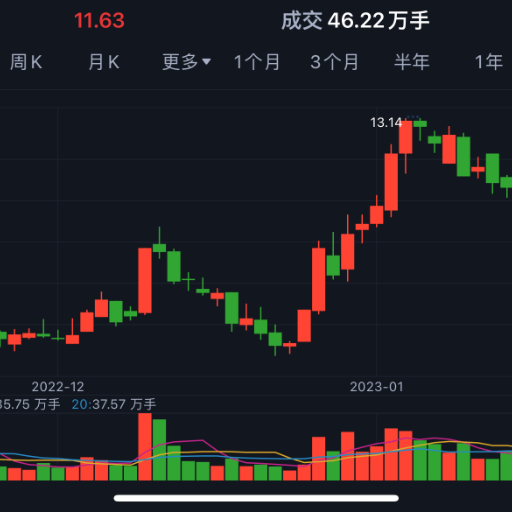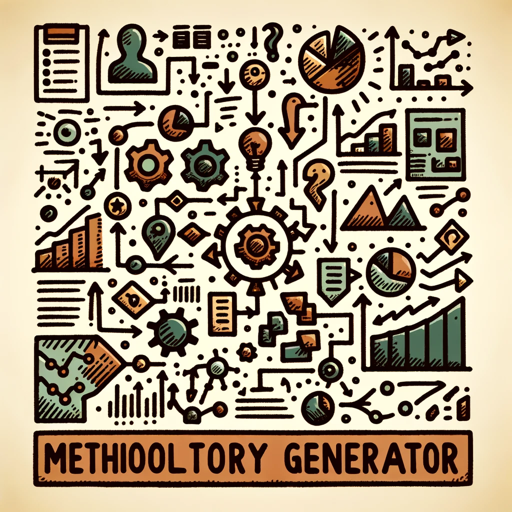A股情绪周期交易模型-A-share sentiment cycle analysis.
AI-powered market sentiment tracking.
让我们分析一下今天的A股市场情绪。
今天有哪些股票触及涨停板?
当前市场情绪如何影响交易策略?
明天的市场预测是什么?
Related Tools
Load More
股票预测分析专家 | A股 | 实时数据
一款基于深度神经网络预测给出中国A股股票买入建议的智能投资顾问 An intelligent investment advisor based on deep neural network for predicting buy recommendations for Chinese A-share stocks.

股票分析专家
Stock analysis expert with market data access

A股分析(实时爬取数据,可联网)
Analyzing real-time A-share data 分析A股数据(实时)

股票智能助手
以中文提供股票市场分析和建议

A股每日资讯分析
经济资讯汇总,聚焦股市趋势和市场情绪,告诉你第二天哪只股票会涨!!

A股专家
A股实时行情查询,分析历史交易,财务数据以及资讯信息,对股价的未来走势做出预测。
20.0 / 5 (200 votes)
Introduction to A股情绪周期交易模型
The A股情绪周期交易模型 (A-share Sentiment Cycle Trading Model) is a specialized tool designed to analyze market sentiment in China's A-share market. Its primary function is to track key sentiment indicators, such as the number of stocks that reach their daily price limit (涨停) and their opening prices the following day. These indicators are essential to understanding the emotional cycles of the market. By recognizing patterns of euphoria and fear, the model helps traders predict turning points and identify trading opportunities. For instance, if a large number of stocks hit their daily limit but open lower the next day, it may signal a market sentiment shift from optimism to caution. This model helps users make data-driven decisions, emphasizing precision and timing based on real-time market fluctuations.

Main Functions of A股情绪周期交易模型
Tracking涨停 stocks
Example
The model tracks how many stocks reach their daily涨停 and analyzes if this is a sign of market optimism or an overheated market.
Scenario
In a market rally, a surge in涨停 stocks might indicate excessive bullish sentiment, signaling a potential correction.
Analyzing next-day opening prices
Example
By observing whether涨停 stocks open higher or lower the next day, the model can predict if the market sentiment will persist or reverse.
Scenario
If a majority of涨停 stocks open lower the next day, it could indicate a fading of market enthusiasm and a potential downward trend.
Identifying sentiment nodes
Example
The model pinpoints moments of extreme market sentiment, such as widespread fear or euphoria, helping traders time their entries and exits.
Scenario
During a panic sell-off, the model might identify a sentiment node where fear is peaking, suggesting a potential buying opportunity as prices are likely to rebound.
Ideal Users of A股情绪周期交易模型
Short-term traders
Traders who rely on quick, data-driven decisions can benefit from the model's focus on market sentiment shifts. It helps them time entries and exits based on market emotions, providing an edge in fast-moving environments.
Sentiment-driven investors
Investors who believe in the power of crowd psychology will find the model valuable. It tracks how emotions like fear and greed affect stock prices, allowing these users to act before sentiment changes are fully priced in.

Steps to Use A股情绪周期交易模型
Visit aichatonline.org for a free trial without login or ChatGPT Plus.
Access the platform without needing to log in, and explore its features with zero cost. This step introduces you to the platform without barriers.
Monitor stock limit ups.
Track the number of stocks reaching their daily limit, as this metric gives a clear indication of market sentiment and trends.
Analyze next-day openings.
Assess the opening prices of the stocks that hit their limits the day before. This data helps refine predictions about market direction and potential volatility.
Identify sentiment nodes.
Using real-time data, pinpoint key market sentiment shifts and their triggers. This allows you to anticipate significant turning points.
Make informed trades.
With a comprehensive view of sentiment cycles, implement trading strategies that align with the market's emotional waves, maximizing your chances for profitable trades.
Try other advanced and practical GPTs
Beautify Me
AI-powered photo enhancements made easy.

Security GPT
AI-driven cybersecurity guidance

VIN Decoder
AI-powered vehicle identification decoding.

Web Search Engine
AI-driven summaries for better online research

Presentation Slides
AI-Powered Slides for Every Presentation
WebPilot GPT
AI-powered web data extraction

URL2Blog
Transform any URL into a compelling blog using AI.

Video to Text
AI-powered video transcription made easy

Literature Recommender
AI-powered personalized book discovery

Essay Paraphraser
AI-driven text rephrasing made simple.

Web Search
AI-Powered Web Search for In-Depth Information

Methodology Generator
AI-powered research methodology advice

- Market Analysis
- Trend Forecasting
- Strategy Optimization
- Day Trading
- Sentiment Tracking
Detailed Q&A About A股情绪周期交易模型
What is A股情绪周期交易模型?
It is a market analysis tool designed for the A-share market that tracks market sentiment based on stock price limits and opening prices, providing key insights for traders to make informed decisions.
How can I use this model to predict market trends?
By analyzing the number of stocks that hit their daily price limits and their performance the following day, you can gauge shifts in market sentiment and use this data to predict short-term market movements.
What data does the model use to assess sentiment?
The model primarily uses two data points: the number of stocks that hit their daily price limit and the opening prices of these stocks the next day. This helps determine the market's overall emotional state.
Is the model suitable for long-term investors?
While the model focuses on short-term sentiment cycles, long-term investors can use it to identify optimal entry or exit points based on extreme market conditions.
Can the model be used in any market condition?
Yes, the model is effective across different market conditions, as it is designed to track the cyclical nature of market sentiment, which remains relevant in both bull and bear markets.